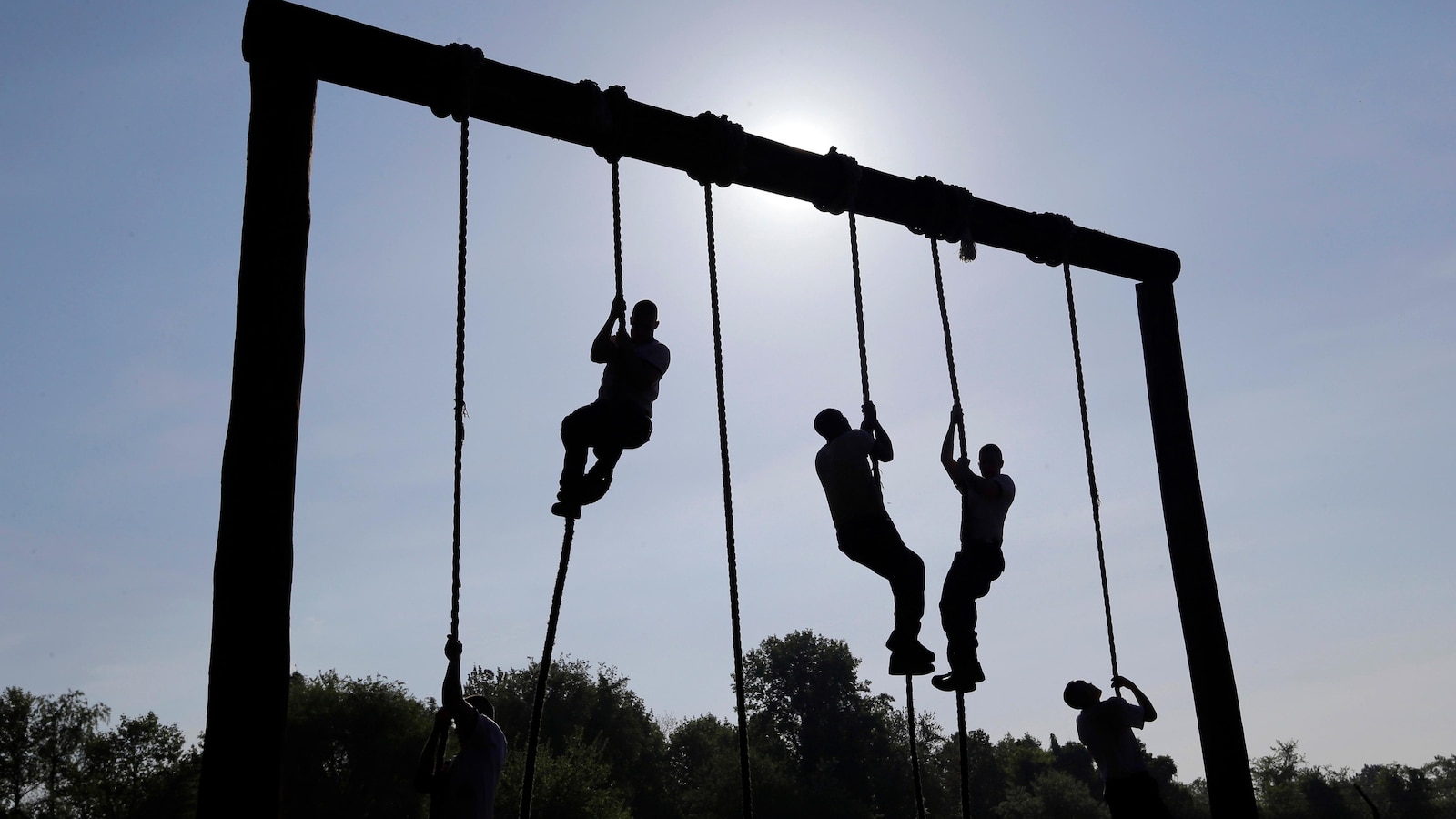
WASHINGTON — The Navy will meet its goal to sign up 40,600 recruits by the end of September thanks to several new recruiting programs, but the crush of last-minute enlistments means it won’t be able to get them all through boot camp by next month.
Navy Vice Adm. Rick Cheeseman said the service will fall about 5,000 sailors short of its target to get all of the recruits into the 10-week training course at Great Lakes, Illinois, by the end of the fiscal year. While they have signed initial contracts, many are months away from getting into boot camp or into the fleet.
The Navy hasn’t been able to hit its total recruiting goal now for two years in a row. And those gaps are hurting its ability to fully staff its warships. The Navy is short about 22,000 sailors to fill billets on ships, and the vast majority of those — about 20,000 — are in the lowest ranks.
“We have not gotten to the point where we can’t do things — I want to make sure that’s clear,” Cheeseman said in an interview with The Associated Press. “We’re all working together to make sure our ships are ready to do the things we ask them to do.”
All of the military services have struggled in the past several years to attract recruits in a tight job market, where companies are willing to pay more and provide good benefits without the demands of service and warfighting. It is also difficult to find young people who can meet the military’s physical, mental and moral standards, which have strict limits on drug use and criminal convictions.
Last year, for example, the Navy, Army and Air Force all failed to meet their recruitment goals, with the Navy falling short by about 6,000. The Marine Corps and tiny Space Force have consistently met their targets. This fall, all but the Navy are on track to make their numbers and have largely rebounded without some of the more dramatic steps the Navy has taken, including accepting recruits with very low test scores.
The latest surge in Navy recruiting has given Cheeseman and other leaders optimism that the changes made to bring in more sailors are beginning to work. And he predicts full success next year.
“We have rebounded so significantly over the last four to five months, so that I really have phasing problems,” Cheeseman said. “Because we were short October through February, we’re trying to push all these people through at the end.”
As a result, he said, boot camp is operating at capacity, and he’ll only be able to get about 35,500 through by the end of September.
One of the key recruiting changes was the Navy’s decision in December 2022 to greatly expand its pool of applicants by wooing young adults with very low test scores, then bring in recruits who don’t have high school diplomas or a GED — both rare steps that the other services greatly limit or avoid.
Cheeseman said that roughly 17% of its recruits this year are so-called category 4 — the lowest end of the test scale. That percentage is much higher than the military norm.
For the most part, the services limit the number of category 4 recruits to no more than 4% of their enlistment totals or refuse to let them in at all. The Navy, however, has argued that it needs those lower-scoring recruits to fill a large number of jobs that involve intense manual labor.
Recruits who score 30 or below on the Armed Services Qualification Test are category 4, and Cheeseman said the Navy had been taking young men and women who scored between 10 and 30 out of a possible 99. Recently, however, he said they stopped letting in those who score between 10 and 20, “because I just don’t need them anymore.” But the Navy continues to take those who score between 20 and 30.
Taking lower-performing recruits has traditionally raised concerns about potential discipline problems or other issues down the road.
Navy recruiters found some success attracting people without high school diplomas or their equivalent, as long as they scored above 50. That change, made early this year, has brought in about 400 recruits. Many of them, said Cheeseman, score pretty well on the aptitude test, with an average of about 63.
The other major change was the launch of a new Future Sailor Preparatory Course, modeled after one set up two years ago by the Army, which has had significant success. The Navy began its program in April 2023 and so far about 2,900 sailors have gone to the academic course and at least 1,850 have completed it. About 300 have gone through the physical fitness course.
The prep course is for recruits who don’t do well academically or on the physical test and it provides three weeks of instruction that can then be extended to up to 90 days.
Cheeseman is optimistic as he looks ahead, saying the Navy has increased its staffing at boot camp so that it will be able to handle the full mission over the next year.
“Our recruiters are killing it. They’re doing great. They’re crushing the mission,” he said. “We’re trending in the right direction. I’ll be able to sustain the numbers we need starting October 1st to make 40,600 next year. No problem. We’re ready to go.”
The United States Navy has long been known for its rigorous training and high standards for recruits. In recent years, the Navy has been working to increase its recruitment numbers in order to meet the demands of a growing military force. While there has been some improvement in Navy recruiting efforts, the service branch has fallen short of its target for boot camp enlistments.
According to recent data released by the Navy, recruitment numbers have shown a slight increase compared to previous years. This is a positive sign for the Navy, as it indicates that their efforts to attract new recruits are starting to pay off. However, despite this improvement, the Navy has still not met its target for boot camp enlistments.
One of the main challenges facing Navy recruiters is the increasing competition from other branches of the military, as well as from civilian employers. With a strong economy and low unemployment rates, many young people are opting for civilian jobs over military service. In addition, the Navy’s strict physical and academic requirements can be a deterrent for some potential recruits.
To address these challenges, the Navy has been implementing new strategies to attract and retain recruits. This includes increasing advertising and outreach efforts, offering signing bonuses and other incentives, and working with schools and community organizations to promote the benefits of a career in the Navy.
Despite these efforts, the Navy is still struggling to meet its recruitment goals. This shortfall has raised concerns about the readiness and effectiveness of the Navy’s force in the future. Without enough new recruits entering boot camp, the Navy may face challenges in maintaining its current force levels and meeting its operational commitments.
In response to this issue, Navy officials have stated that they are committed to continuing their recruitment efforts and exploring new ways to attract qualified candidates. They are also working to improve retention rates among current sailors in order to ensure a strong and capable force for the future.
Overall, while there has been some improvement in Navy recruiting efforts, the service branch still faces challenges in meeting its recruitment goals. It will be important for the Navy to continue to adapt and innovate in order to attract and retain the best and brightest recruits for its ranks.


